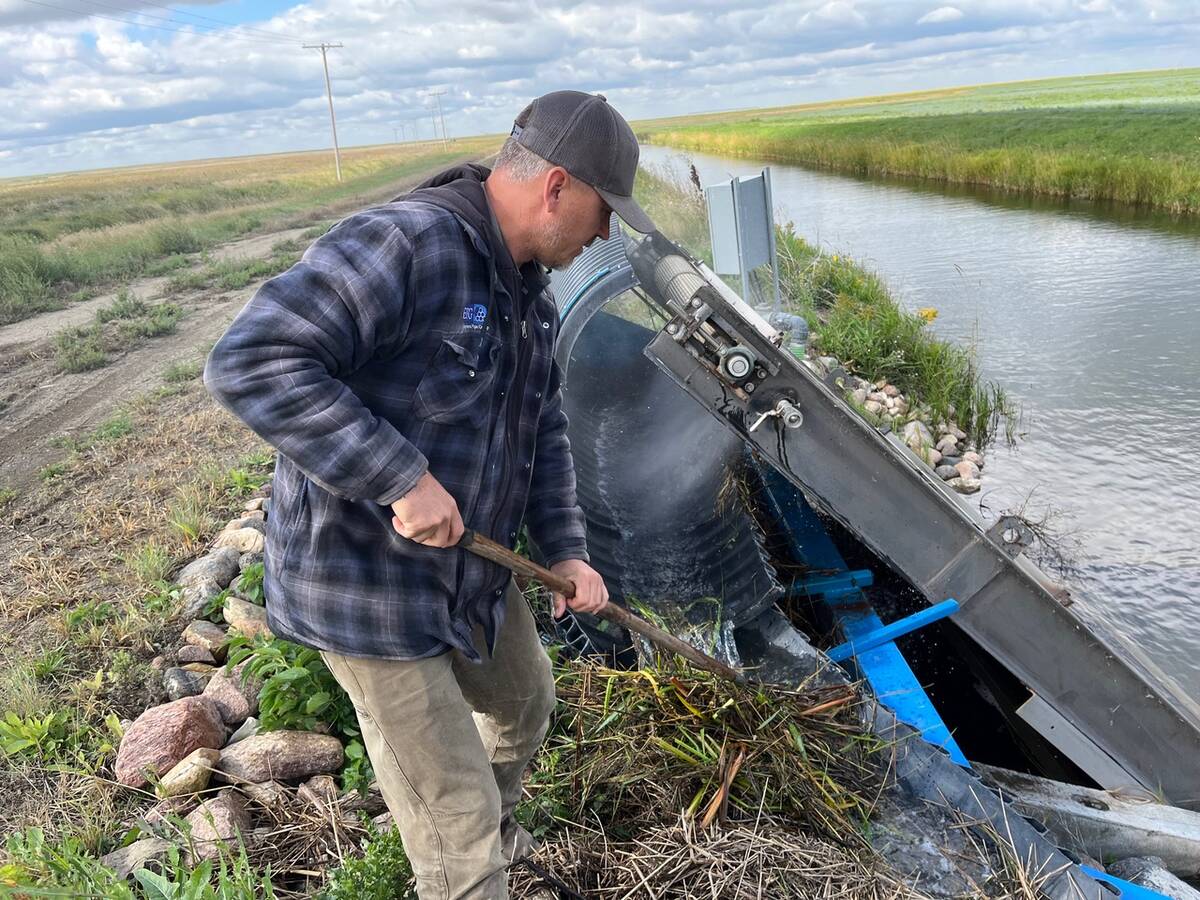Gerald Moriarty found it can take half a lifetime for government to right past wrongs.
The farmer from Kamsack, Sask., was among dozens of producers who endured additional flooding on parts of their farmland after the Shellmouth Dam was completed on the Assiniboine River in 1970. Seeding delays became frequent for farmers upstream from the dam, built in Manitoba about 300 kilometres northwest of Winnipeg.
Moriarty was in his thirties when he and other upstream landowners in Saskatchewan began pressing government for compensation for damages. Three decades later, they have finally been rewarded for their efforts, although the compensation was not as much as Moriarty wanted.
Read Also

Saskatchewan farmer uses tile drainage to manage water
The integration of both irrigation and tile drainage results in higher yields, water efficiency, improved soils and less nutrient runoff, says one producer.
“We had to fight like hell to get this,” he said. “We’ve been at this for 30 years.”
The Shellmouth Dam was built under the supervision of the federal Prairie Farm Rehabilitation Administration. The structure, which serves as a reservoir and helps regulate downstream flow on the Assiniboine River, was turned over to the Manitoba government in 1975.
Ottawa and the province recently announced a cost-sharing agreement to deal with present and past issues on the Assiniboine River. Almost half of the $8 million announced was to compensate upstream landowners and to buy more upstream land in Saskatchewan.
Moriarty said the years he spent trying to gain compensation left him with a distaste for government.
“I knew that in time, they would have to settle it,” Moriarty said. “I’m like a dog with a bone; once I sink my teeth into it, I won’t let go.”
Another $4 million will pay to im-prove the dam so it can hold more water and better control floods, according to government officials. Regulating the water flow on the Assiniboine River is important to Manitoba’s agriculture, especially to producers and processors who make their living from irrigated crops.
Public consultations are under way to learn the effects the dam changes will have on landowners and the environment downstream.
Meanwhile, other Manitoba landowners downstream from the dam say they are waiting for governments to acknowledge that they also have been harmed by flooding over the past three decades because of how the dam was managed. Although there have been more consultations with landowners in recent years about the way flows from the dam are regulated, the risk of flooding remains, said Kelvin Nerbas, a councillor for the rural municipality of Shellmouth-Boulton.
“The threat is there and we still have no acknowledgement that we’ve been harmed.”
Nerbas was among those affected by flooding but he sold his land in 1998. He wonders what kind of new problems might be created if changes are made to the dam to hold back more water at higher levels.
“We had better approach that with extreme caution. Let’s at least learn something from the past 30 years.”
Some of the worst flooding in the Assiniboine Valley happened in 1995, when close to 39,000 acres were affected in municipalities stretching from Shellmouth to Brandon. Some of the affected farmers had all their productive land in the valley.
The flooding prevented much of the land from being seeded and farmers estimated they lost close to $270,000 worth of fertilizer and herbicide that had been applied the previous fall.
















